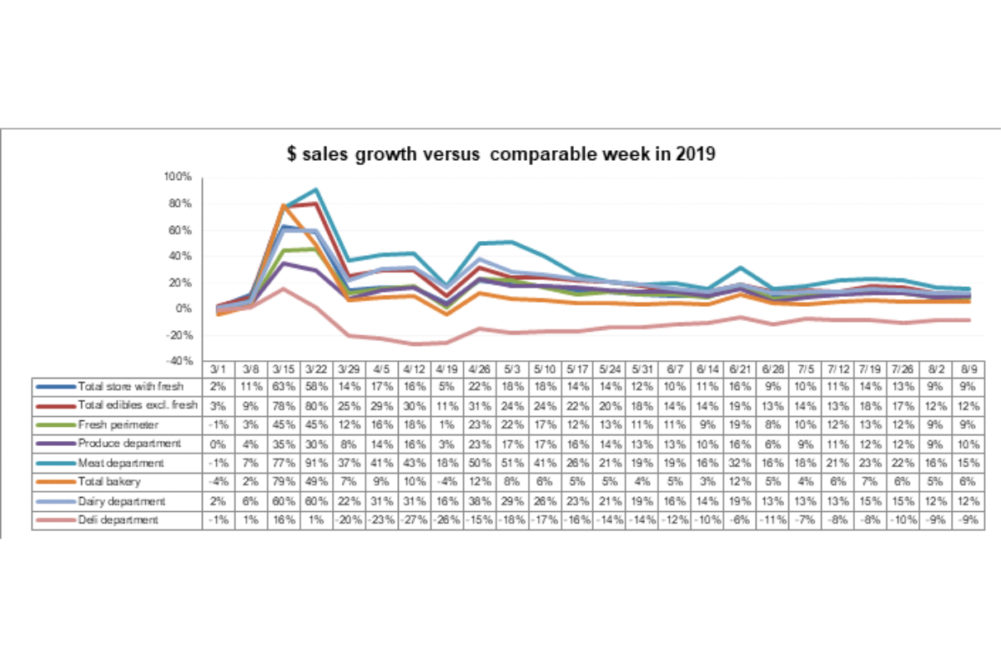SAN ANTONIO – According to data collected and analyzed by 210 Analytics and IRI, perimeter sales the week ending on Aug. 11 came in at 9% above sales during the same timeframe in 2019. This is the second week in a row perimeter sales gains have fallen below the 10% mark.
“At this point in time, we have continued coronavirus concern and economic pressure weighing on food spending,” said Jeremy Johnson, vice president of education for the International Dairy Deli Bakery Association (IDDBA). “At the same time, back-to-school season keeps gearing up but very differently than in prior years with many students continuing with virtual education only. This will impact growth trends going forward, positively or negatively depending on the category and item. Helping consumers with meal planning and underscoring the value and healthfulness of home-prepared meals will help ensure we optimize the deli, dairy and bakery dollar.”
The dairy department experienced a 12% gain in dollar sales compared to 2019 in the second week of August. Top performers in the category were whipped toppings (up 23.1%), eggs (up 18.2%) and natural cheese (up 17%).
The deli department came in 9% below 2019 sales numbers. Deli prepared came in at 21% below 2019 sales, deli meat at 9% above and deli cheese at 10% above.
“Many retailers are still in wait-and-see mode as it relates to bringing deli-prepared options back online,” said Eric Richard, industry relations coordinator with IDDBA. “Between local health department guidelines and shopper concern, most retailers are still selling pre-packaged items only. While pre-packaged has done a tremendous job in bringing sales back, it does not quite offset the old volume at least in part due to the smaller assortment.”
The meat category came in at 15% above 2019 dollar sales and 6% above volume sales, the same as the week previous. Dollar wise, lamb (up 24.3%), beef (up 20.6%) and pork (up 12.5%) were the top performing meats. Chicken was up 4% and turkey was up 12.5%.
“Everyday spending on groceries, including meat, will increasingly depend on shoppers’ individual financial situation as economic pressure and uncertainty is mounting,” said Anne-Marie Roerink, president of 210 Analytics. “Back-to-school season is in full swing, though it looks very different from prior years in most states. This will continue to impact year-over-year trend lines, particularly for meats affected by breakfast and lunch occasions with many more children at home while participating in virtual education.”


